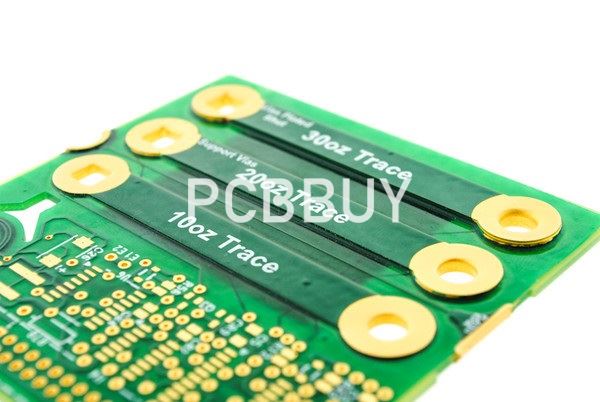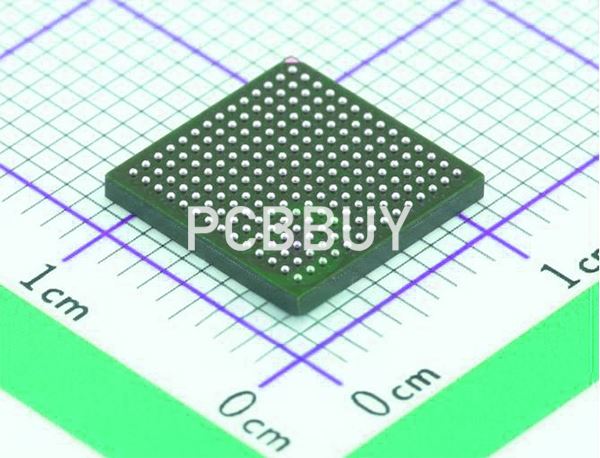How to calculate PCB trace width?
By:PCBBUY 07/13/2021 08:56

Do you know the methods of PCB trace width calculating? In this passage we will tell you everything about PCB traces width and if you are searching for the professional knowledge of PCB manufacturing, please check the content below.

What is PCB trace width calculator?
A PCB trace width calculator is a device that relies on formulas from IPC 2221 to determine the PCB trace width. The trace width is a crucial factor you must put in mind when designing your circuit board. As a matter of fact, you should assign the correct width to shreds to prevent it from damages caused by high temperatures.
It would be best to design your PCB traces to bear a maximum current load before they malfunction. Remember, when you conduct more current via a path, it begins to generate heat. Consequently, when the current load exceeds the upper limit, the trace burns out or destroys the circuit board laminate. This can lead to permanent PCB damages.
You can liken PCB traces to wires linking various nil-resistance components. However, every PCB path contains its own resistance, which is an essential factor when choosing the PCB trace width. Therefore, you should be aware of the resistance and current conduction capacity to define the width you will use.
It is important to note that the increase in temperature influences the trace width. The temperature rise refers to the trace hotness when conducting current compared to when it is not. In other words, you simply need to subtract the operating temperature from the upper operating temperature to get the temperature rise.
We know that obtaining the trace width sounds like a mountain of work and calculations, does it? However, you should not be worried at all! The trace width calculator simplifies the whole process quickly and accurately.
How to calculate PCB trace width?
It is not enough to find the available circuit board trace or utilize a simple method or operation to precisely identify your trace resistance. Nevertheless, to ensure that your circuit board traces properly turn on, you should determine your PCB traces and trace width. Establishing and considerably increasing your PCB trace width will enable you to minimize your circuit board traces' resistance.

What You Should Know Before Calculating the PCBs Trace Width?
Determining the PCB trace width is more complicated than finding a given conductor. This is because there exist numerous aspects you should consider before calculating your circuit board trace breadth. For instance, you should know the maximum current that your PCB functions well with, like the trace thickness.
PCB Trace Width and Spacing
For you to get the trace width using a PCB trace width calculator, you need to consider various factors, like:
· Your trace's current conduction capacity.
· The pitch and dimensions of the pads your trace will be linking.
· The space between your traces.
Other than your trace width, it is equally important to check out the gap between your traces. It prevents short-circuiting and permits maximum space between atoms for effective running.

Circuit boards are usually small in relation to the production expenses. But if your PCB is too small, you will experience challenges routing the traces and keeping the correct gaps between them. Most PCB manufacturers recommend a spacing of 6-30 miles- adequate for many trace widths.
PCB Trace Width Formula
You can still determine your PCB trace width using the trace width formula. The method allows you to calculate the tolerable current you can transmit through a specific trace. The IPC 2221 standard defines the formula, as shown below.
I=k*ΔT^0.44*A^0.725
Now, the letter I stands for current, and you should always consider it as a constant. ΔT represents the temperature change, while A stands for the trace cross-sectional area. It is important to note that you can reorganize the equation to establish the trace width by determining the cross-sectional area for a specific current to flow safely.
Area [mils^2] = (Current [Amps]/ (k*(Temp_Rise [deg. C]) ^ 0.44)) ^ (1/0.725)
Remember, to establish a desirable width; you have to factor in the thickness of your trace.
Width [mils] = Area [mils^2]/ (Thickness [oz]*1.378[mils/oz])
You can use the PCB Trace Width Formula for 0-35 amperes since it only permits temperature increase from 100C-1000C. Furthermore, the formula takes into account a trace width of 400 mils.
Disclaimer: Most PCB manufacturers use the PCB Trace Formula as the industry standard, and they assume it to be correct. However, it may not be suitable for every design. Therefore, it is essential to note that we will not be accountable for any damage it causes.
Industry Category











